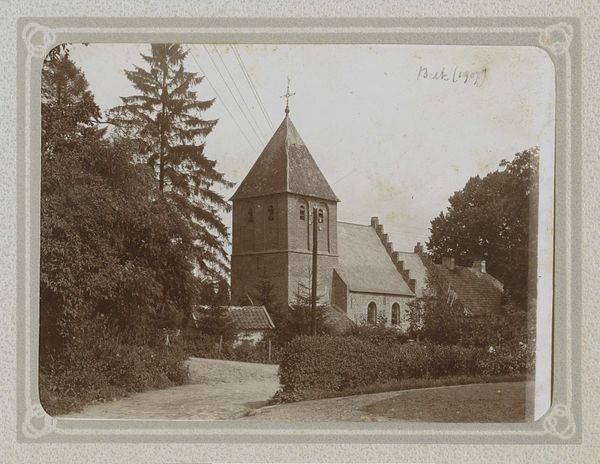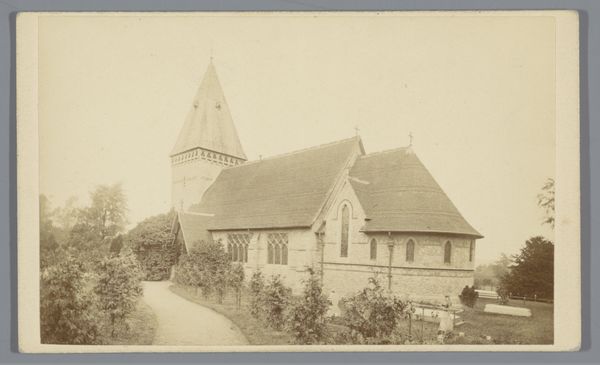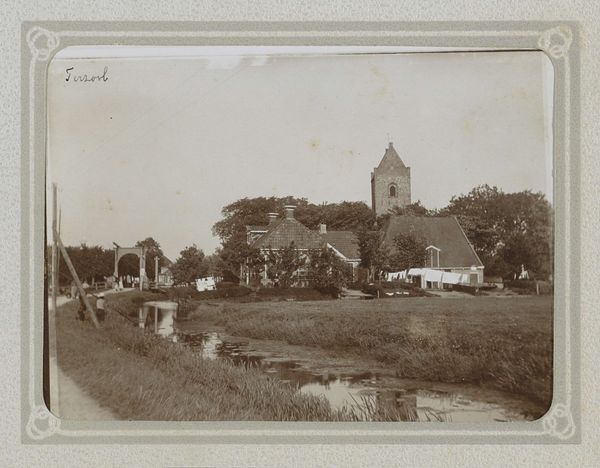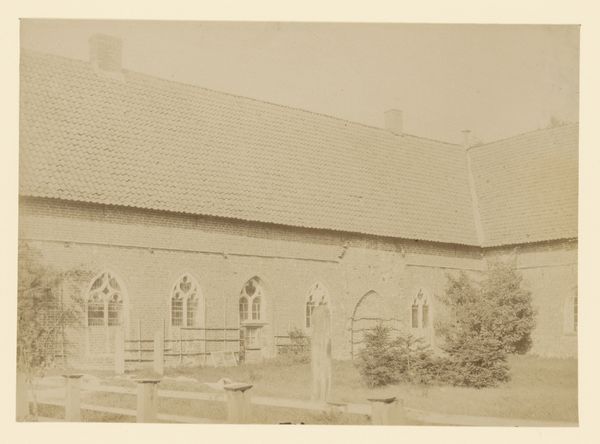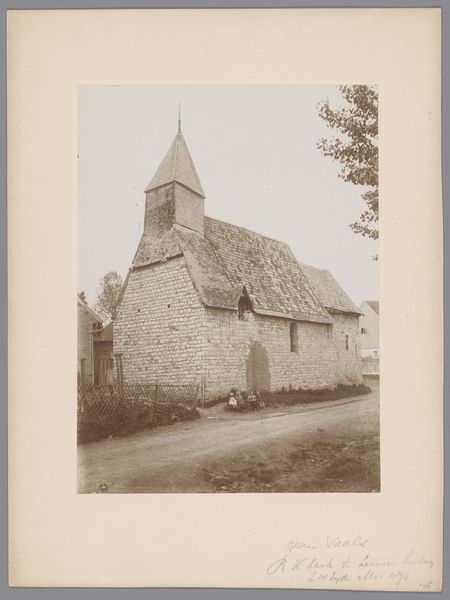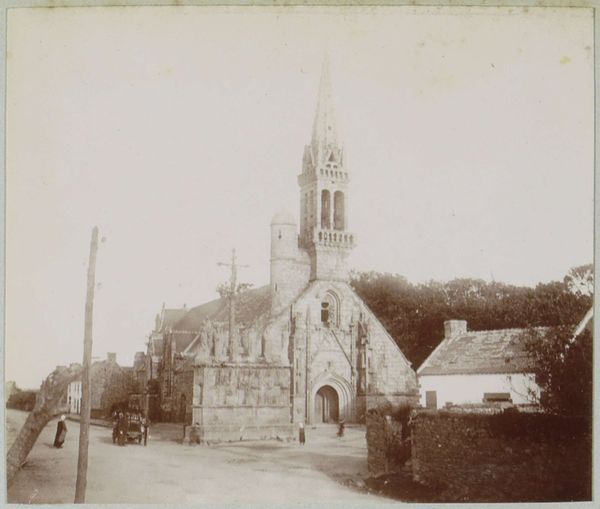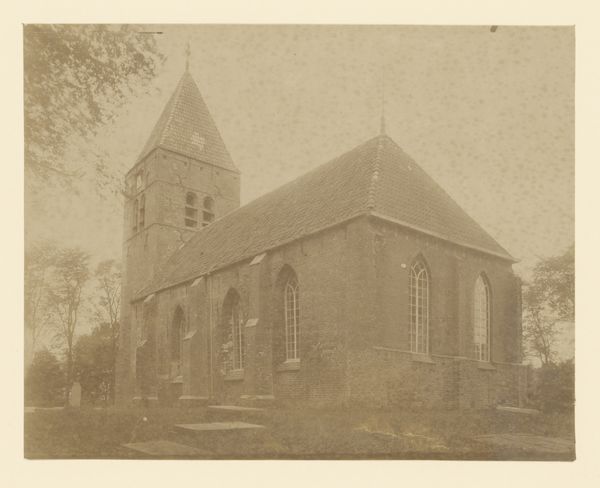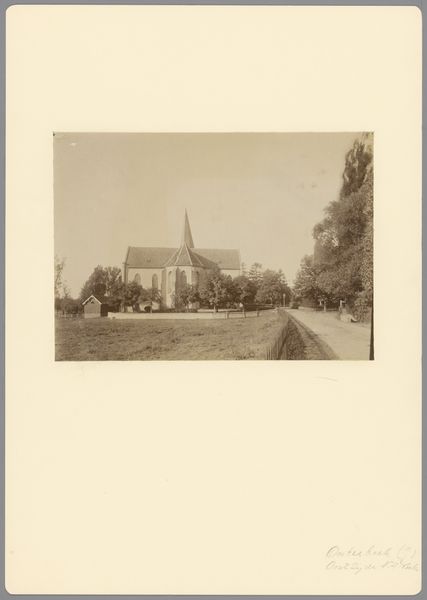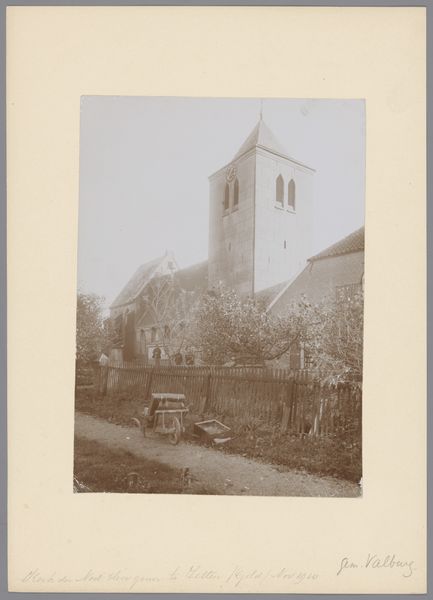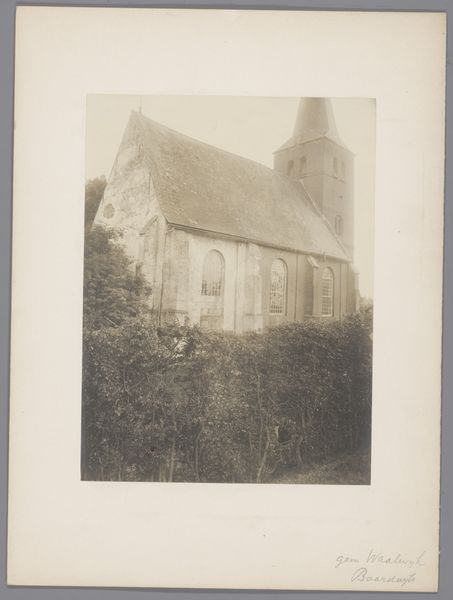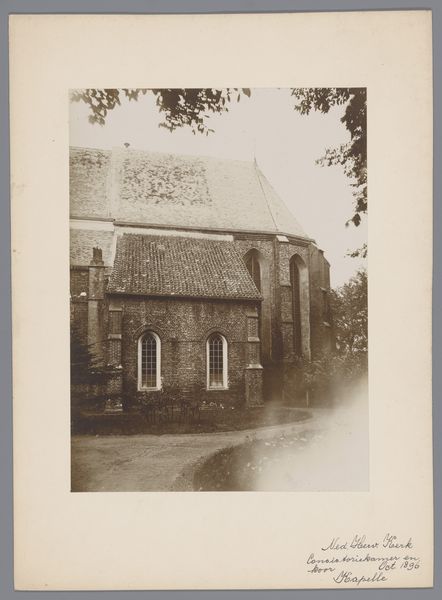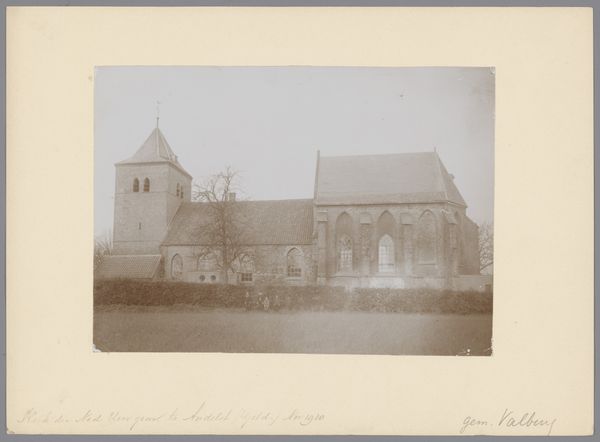
Dimensions: height 81 mm, width 110 mm
Copyright: Rijks Museum: Open Domain
Editor: Here we have a vintage photograph titled "Straat in Groesbeek met slagbomen, kerktoren en huizen" by Folkert Idzes de Jong, dated circa 1905 to 1907. The scene depicts a streetscape with a church, houses, and striking white railway crossing barriers. The mood feels serene, almost frozen in time. How do you interpret this work? Curator: This photograph offers a window into the complex interplay between tradition and progress at the turn of the century. Consider the church, a symbol of established authority and social order, juxtaposed against the railway barriers, which signify modernity, industrialization, and perhaps, disruption. Editor: Disruption? How so? Curator: The railroad quite literally cuts through the landscape, potentially impacting established social hierarchies and challenging traditional ways of life. How did this infrastructure change access to jobs and markets? Did it alter migration patterns and demographics within Groesbeek? These are crucial questions when looking at a seemingly simple image. Notice how the architecture reflects the styles that would reflect societal and cultural expectations about gender and race during the period. Editor: That's a fascinating point. The photograph isn't just a pretty picture, it is capturing this moment where rural life is changing drastically. I had never thought about reading a landscape for signs of identity and power before. Curator: Exactly! By considering the social and political contexts of the time, we can unearth the complex layers of meaning embedded within the photographic print. What stories does the photograph not tell us? Whose perspectives are missing? These questions ultimately challenge us to think critically about the historical record. Editor: This makes me want to learn a lot more about the cultural history of Groesbeek during this period and the communities it served!
Comments
No comments
Be the first to comment and join the conversation on the ultimate creative platform.
